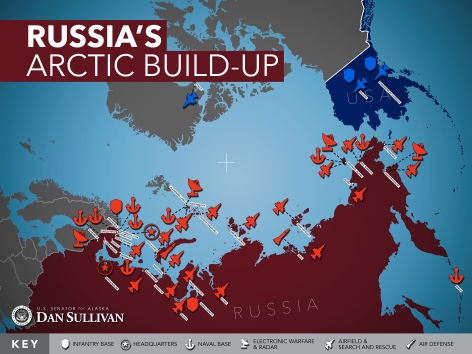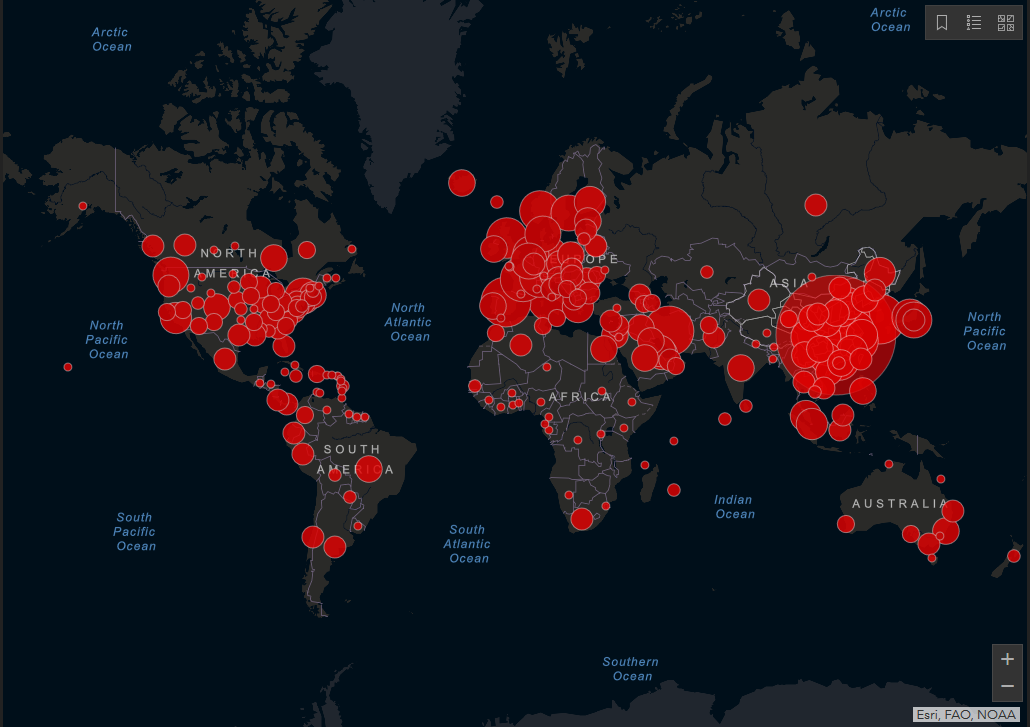 – Turkish Foreign Minister Threatens Syria Will “Pay a Price” for Downing Fighter Jet, Killing Pilots; Syria Stages Multi-Branch War Game
– Turkish Foreign Minister Threatens Syria Will “Pay a Price” for Downing Fighter Jet, Killing Pilots; Syria Stages Multi-Branch War Game
Pictured here: Royal Air Force Tornados intercept Russian “Blackjack” bomber.
On July 4, according to Free Beacon website founder Bill Gertz, citing US defense officials, two Russian strategic bombers “entered the US air defense zone near the Pacific coast on Wednesday and were met by U.S. interceptor jets.” An earlier intrusion by two Tu-95 Bear H bombers took place on June 18, near Alaska, as part of Arctic war games that Lt. Col. Vladimir Deryabin, a Russian Air Force spokesman, acknowledged were designed to simulate attacks on “enemy” air defenses and strategic facilities.
“The bomber flights near the Pacific and earlier flights near Alaska,” opines Gertz, “appear to be signs Moscow is practicing the targeting of its long-range air-launched cruise missiles on two strategic missile defense sites, one at Fort Greely, Alaska and a second site at Vandenberg Air Force Base, Calif.” The defense official Gertz interviewed called the latest incident near the West Coast “Putin’s Fourth of July Bear greeting to Obama.”
Although Gertz did not specify the Continental USA, or “Lower 48,” this is implied by the references to “Pacific coast” and Vandenberg AFB in California. Since the Russian bombers entered the North American Aerospace Defense Command’s Air Defense Identification Zone (ADIZ)–without permission–they would have been within 200 miles of the West Coast.
Pentagon spokesman Capt. John Kirby said that during the July 4 airspace intrusion, the Russian bombers “were visually identified by NORAD fighters,” but the Russians did not enter “sovereign airspace,” which extends 12 miles beyond the US coastline. He refused to identify precisely how far the Russian aircraft were from the West Coast, “due to operational security concerns.” Kirby also refused to identify the types of US warplanes used to intercept the Russians.
In summary, these airborne cruise missile platforms from the Kremlin could have been anywhere from 12 to 200 miles from the coast of California, Oregon, or Washington, but the Pentagon ain’t tellin’. Got CD anyone?
Since 2007, when Moscow resumed long-range bomber patrols, after a 15-year hiatus, Russian “Bear” and “Blackjack” bombers regularly skim the ADIZ around Alaska and northern Canada. However, to approach the West Coast of CONUS, Russian strategic aviation must traverse the North Pacific Ocean, bypassing southern Alaska and the Canadian province of British Columbia. In terms of reported cases, Russian bomber runs at the West Coast seem to be rare and, frankly, are difficult to characterize as peaceful gestures.
During the Cold War, attacking the US West Coast presented some technical challenges for the Soviet Air Force, especially refueling, prompting Moscow to construct the region’s longest runway at Punta Huete, in Sandinista-controlled Nicaragua. In 1990, Nicaragua’s Marxist dictator Daniel Ortega lost a democratic election and the following year the Soviet Union imploded. Cold War rivalries in Central America seemingly fizzled out and Punta Huete was forgotten
Five years ago, however, Ortega returned to power and, two years ago, the second Sandinista regime modernized and re-opened Punta Huete under the command of a special military brigade, a development that occurred with Moscow’s approval. On September 10, 2008, in a provocative move following Russia’s re-invasion and re-occupation of Georgia, the Russian Air Force dispatched two Tu-160 bombers to Communist Venezuela for a week-long drill over the southern Caribbean Sea. It is not inconceivable that one day Russian Bears or Blackjacks could materialize in Nicaragua, where Ortega has aggressively re-consolidated his communist dictatorship.
These little-noticed activities on the part of Russian strategic aviation reveal the Kremlin’s careful, incremental probing of North American air defenses, no doubt in support of its disapproval of US foreign policy and military posture in Europe and Syria. In May, Gertz reminds us, Nikolai Makarov, chief of the Russian General Staff, warned Washington against deploying more missile interceptors in Poland and new ones in Romania. “A decision on pre-emptive use of the attack weapons available will be made when the situation worsens,” Makarov rumbled.
Retired US Air Force Lt. Gen. Thomas McInerney, a former Alaska commander for NORAD, said the latest Russian bomber intrusion in the Arctic appears to be Kremlin “military testing.” “It’s becoming very obvious that [Russian President Vladimir] Putin is testing [US counterpart Barack Hussein] Obama and his national security team,” McInerney told the Free Beacon. “These long-range aviation excursions are duplicating exercises I experienced during the height of the Cold War when I commanded the Alaska NORAD region.” He continued:
The [Tu-95] Bear H flights are an effort by the Russians to challenge U.S. resolve. This is somewhat surprising as Obama is about to make a unilateral reduction of our nuclear forces as well as major reductions in our air defense forces. Actions by Russia in Syria and Iran demonstrate that Cold War strategy may be resurrected. These are not good indications of future U.S. Russian relations.
In response to questions about the June intrusion, Marine Corps Col. Frank H. Simonds, Jr., deputy chief of staff for NORAD-US Northern Command, defended the Russian bomber probes as nonthreatening. “NORAD does not consider these flights a threat,” Simonds said, adding: “Russia and NORAD routinely exercise their capability to operate in the North.” He identified the Alaska intruders as Tu-95MS bombers and the interceptors as US Air Force F-15s and Royal Canadian Air Force CF-18s.
“Interaction between NORAD fighters with these types of aircraft are carried out routinely,” Simonds said. “As part of its responsibilities to identify all aircraft in its area of operation, which includes the ADIZ, NORAD has visually identified more than 50 Russian long range bomber aircraft over the last 5 years and NORAD fighters have been interacting with Russian aviation for over 50 years.” As if to shill for communist-scripted East-West convergence, Simonds pointed out that since 2010 NORAD and Russian aircraft have participated in an exercise called Vigilant Eagle, which is designed to foster “cooperation on identifying and intercepting hijacked aircraft that cross international boundaries.”
Incidentally, according to Russia’s acting deputy air force commander, Major General Alexander Chernyayev, the Kremlin intends to introduce its new stealth PAK-DA long-range bomber by 2020, not 2025 as initially planned.
Meanwhile, tensions between NATO member Turkey and Syria, where a 16-month-old civilian uprising-military rebellion is seeking to oust the Ba’athist regime of President Bashar al-Assad, continue to escalate. On June 22, Syrian air defense troops–possibly with the assistance of Russian technicians who, by the Russian defense minister’s admission, are known to be on the ground in Syria–downed a Turkish Air Force F-4 Phantom reconnaissance plane over the Mediterranean Sea, killing the two pilots.
Since then, Turkish F-16s have scrambled nine times to counter Syrian helicopters, since Ankara, which vehemently opposes Assad’s brutal crackdown on dissenters, changed its rules of engagement with the Syrian military. Now the Turkish government views any Syrian military movement near the common border as hostile. To bolster that policy, the Turkish army has deployed multiple anti-aircraft missiles along the Syrian border.
Turkish Foreign Minister Ahmet Davutoğlu, according to Hürriyet Daily News, has “vowed that the Syrian leadership would pay a price for the hostile attack against an unarmed Turkish jet, sparking speculations about a potential Turkish military retaliation.”
This week, Damascus announced that the Syrian military had begun a “massive” exercise that includes its army, navy and air force, whose task is “to respond to a military attack from a foreign country.” In response, a Turkish foreign ministry official told Hürriyet: “If they [the Syrians] are trying to deliver a message to their neighboring countries, including Turkey, they should know that we’re not in a position to get that message. We are closely following every military move of Syria in the region, especially after they shot down our jet.”
In a related story, on July 4, near the northern city of Aleppo, the Syrian army ambushed a convoy of five trucks driven by Turks. The Syrian soldiers shot up the vehicles so badly the trucks were rendered “unusable.” However, guerrillas of the Free Syrian Army (FSA), whose commander in chief is based in the southern Turkish province of Hatay, escorted the Turks back to their homeland. Although the Turkish media made no such mention, it seems likely that the trucks were conveying weapons to the Syrian insurgents.
Last week, the Syrian military flung 100 armored vehicles, tanks, and missile launchers at Aleppo, in an attempt to crush the front that Saudi-backed rebels have opened in the north. “Rebels have inflicted major damage on Assad’s troops. But at the same time rebels have lost ground,” Abu Hamam, a resident of Khan Sheikhoun, another northern city, told Reuters. A second anti-regime activist, Abu al-Ghaith al-Khani, Skyped that Syrian regular troops had also entered Khan Sheikhoun, “burning houses and farms,” and forcing 80 percent of the city’s residents to flee.
In southern Syria, where Assad’s forces have besieged Homs for months, a resident of the battered Khalidiya district said that the city was “surrounded by artillery and troops.” “The regime has imposed a crippling siege in most of the anti-government areas ofHoms,” Saif al-Arabi, also communicating by Skype, told Reuters. “We can’t get the wounded out.”
Turkey now hosts some 250 Syrian military officers, including generals, who have defected to the FSA. Reportedly in cooperation with CIA agents stationed in southern Turkey, Ankara is helping the FSA with “logistical support,” but the Turkish government “denies providing them weapons.” More than 35,000 Syrian refugees live in camps set up by Turkish authorities.
Last month, the Russian General Staff announced that the navy was sending two amphibious landing ships toSyria, with the intent of securing its Soviet-era naval maintenance facility in Tartus. Together, the two Russian warships can transport up to 600 marines, raising the prospect of some kind of superpower showdown over Syria.







